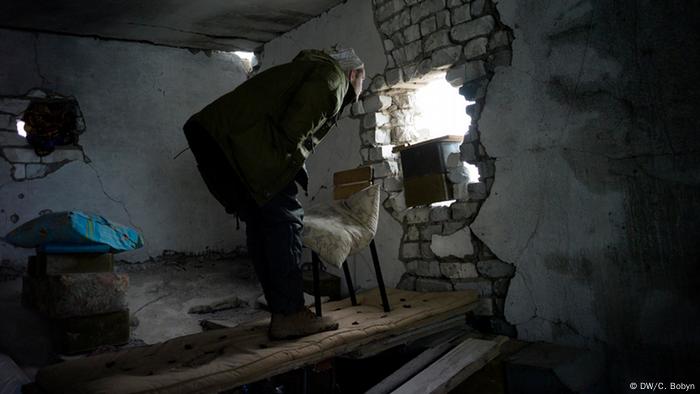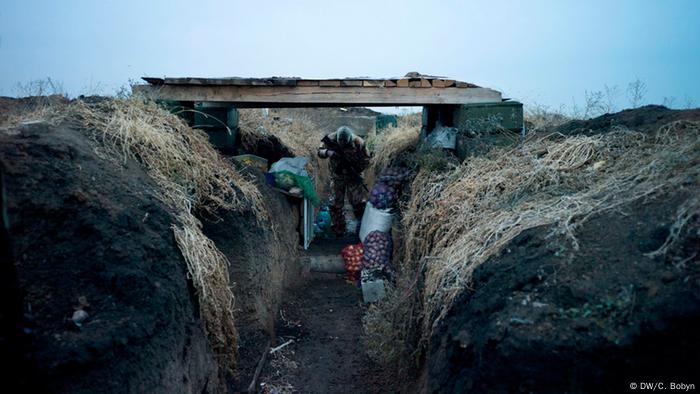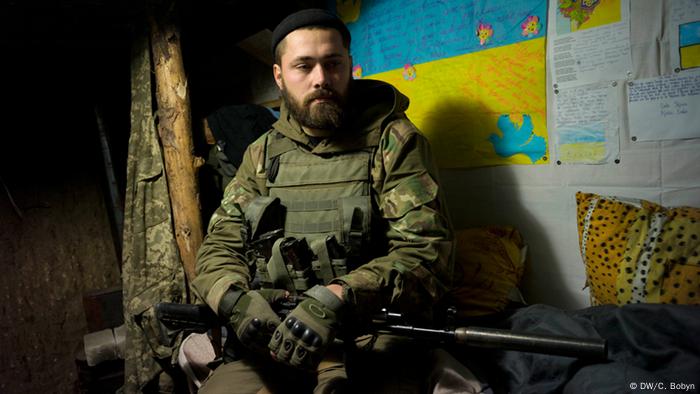The FBI was excited. That much seemed evident from the affidavit the agency lodged on March 9, 2018, asking a court for permission to dig up a Pennsylvania hillside in search of Civil War gold.
Check out more from this issue and find your next story to read.
View More
The affidavit related a story from a document titled “The Lost Gold Ingot Treasure,” which had been found in the archives at the Military History Institute, in Carlisle, Pennsylvania. The tale, in its barest bones, was this: In June 1863, a caravan of Union soldiers transporting a shipment of gold through the mountains became lost. Three men were sent to get help and eventually one returned with a rescue party, which located the group’s abandoned wagons but no men, no gold. Teams from the Pinkerton detective agency scoured the hills. In 1865, two and a half buried ingots were found, and, later, the bones of three to five human skeletons. The rest of the gold remains missing.
The affidavit also laid out how this story had come to the FBI’s attention. A treasure hunter named Dennis Parada had heard folklore alluding to the lost gold “since he was a child,” and had spent “over forty years” searching for it. Now he and a team including his son, Kem, believed they had finally located it, in the inaccessible recesses of a “turtle-shaped cave” near the community of Dents Run. FBI agents had visited the site twice and ordered geophysical surveys that had detected something underground—something “with a density of 19.5g/cm³ (the density of gold) and consistent with a mass having a weight of approximately 8½ to 9 tons.”
In other words, the FBI believed it knew where an enormous hoard of gold was, and as soon as they could get their hands on a warrant, federal agents were coming to get it.
Dennis and Kem Parada had been connected with the FBI several weeks earlier by a middleman. One day in November 2017, Warren Getler, a former Wall Street Journal reporter, was browsing TreasureNet.com, where people interested in buried treasure gather to share theories and discoveries, and to subject themselves to one another’s enthusiasm and scorn. That day something caught Getler’s eye: a post by Parada, who identified himself as the head of a small Pennsylvania-based treasure-hunting group called Finders Keepers. Getler was convinced that they needed to talk.
Getler wasn’t interested in just any treasure. His focus was on a Confederate-aligned organization called the Knights of the Golden Circle, or KGC. The existence of the KGC is an established part of Civil War history, but the depth of influence Getler believes it had, and its continued secret operation, is not. Getler believes that the KGC hid hundreds of caches of gold from the South up to Canada, and that a significant number remain undiscovered. He co-wrote a book on this subject, published by Simon & Schuster: Rebel Gold: One Man’s Quest to Crack the Code Behind the Secret Treasure of the Confederacy. Since then, he has continued to look for evidence, and in the Dents Run story he thought he could spot clues and symbols that, to those who knew how to read them, were telltale signs of KGC involvement.
Dennis says that he was skeptical when Getler approached him. He’d never heard of the KGC. “We’re thinking this guy was a nut job,” he told me. “I don’t know what the hell he’s talking about … I don’t believe in this shit.” Still, the men kept speaking and soon found common ground.
Dennis explained to Getler the impasse that Finders Keepers had reached. The gold they believed they had located was on state land, so they needed the cooperation of Pennsylvania’s Department of Conservation and Natural Resources (DCNR) to act further. But DCNR and the Paradas had a long, complicated history and were currently at loggerheads.
Kem and Dennis Parada stand above the cave at Dents Run with a metal detector in May. (Jingyu Lin for The Atlantic)
There was, however, a possible way forward. If the gold could be shown to have been federal property, as the narrative in the historical documentation seemed to suggest, then the FBI could step in and claim it for the United States government. So far, Dennis had failed to get the federal authorities interested. Getler offered to handle that.
In Kem’s telling, it happened like magic. “Mr. Getler says, ‘Give me a day or two; I’ll have you in the FBI office,’ ” Kem recalls. “Sure enough, within a day or two, he calls back: ‘I got you in the FBI office headquarters, a meeting.’ And we’re like, ‘Holy shit.’ ”
On Friday, January 26, 2018, the Paradas walked with Getler into the United States Attorney’s Office in Philadelphia. They met with Assistant U.S. Attorney K. T. Newton and two agents from the FBI’s Art Crime team, Jake Archer and Sarah Cardone. The following account of the meeting, and of their subsequent talks with the FBI, is based on the treasure hunters’ descriptions. (The FBI declined multiple requests to comment on the details of these interactions.)
The treasure hunters had a hard time reading the room. Their government hosts were attentive, but didn’t necessarily seem receptive. There was one moment, however, that would later come to seem significant. Archer, they say, declared that should gold be found, the government would of course be taking it, slamming his hand down on the table to emphasize his point. Dennis slammed down his hand, too, and declared that they would be fighting for a finder’s fee. At this, Dennis recalls, Archer responded, “Fair enough.”
Not long after, Archer called Dennis and made arrangements to visit the site the following Wednesday. The FBI team—Archer, Cardone, and five colleagues—arrived on Tuesday, and everyone had dinner together at a pub in DuBois. “It was jovial,” recalls Getler, who flew in from Washington, D.C. “We were so high. I believed that we were going to pull up this big KGC cache together.”
The next morning, January 31, the 10 of them hiked up to a level piece of ground about 15 minutes above Dents Run. This was the place. The FBI used a metal detector, which indicated a three-by-five-foot area of buried metal. The Paradas used their own Ground Penetrating Locator machine to demonstrate what they’d previously found at the site. “Got gold readings right off the bat,” Kem recalls.
“Everybody’s yelling and screaming,” Dennis says, “because it’s solid gold.” He told the FBI that, in his estimate, there must be two and a half tons just below them. A find like that could be worth $100 million, or even more.
Now the FBI agents were clearly interested. Over the following days, emails and texts flew back and forth as the government team solicited all the potentially relevant historical documentation.
Erik Carter for The Atlantic
The FBI commissioned its own more sophisticated geophysical study. Archer called Getler with the results.
This is how Getler remembers that conversation: “I said, ‘What was the volume? What was the size?’ He said, ‘Seven to nine tons.’ I went, ‘You got to be fucking kidding.’ My heart’s going boom boom boom … I literally jumped out of my face.”
This is Dennis’s summary: “Archer says, ‘Yes, we got the results. Well,’ he says, ‘Denny, you’re wrong at two and a half tons … It was over nine tons of gold.’ ”
When things start going awry in this story—and they will—you may start to doubt every wrinkle of the treasure hunters’ account. You may be tempted to ask whether it bears any relation to the truth as it exists in the world of dreary, not-all-that-glitters actuality.
When that happens, remember the affidavit. The FBI has declined to fill in its side of the story, but that document isn’t some vaguely speculative memo. It’s 29 pages of apparently rigorous detail, assertively laying out the whole “Lost Gold Ingot Treasure” narrative alongside the geophysical surveys and the wider historical and mineralogical research that the FBI did. What was written in those pages served its purpose: A judge signed off on a warrant giving the FBI 14 days to seize “approximately one or more tons of gold belonging to, and stolen from, the United States Mint, and located on the Dents Run Site, in Elks County, Pennsylvania.”
A dig was scheduled to begin on the morning of March 13. The treasure hunters were told that no press would be allowed. But they insist they were told that they could watch the dig as it progressed.
“There,” the agent told them. “Look in the hole. What do you see?”
At the time, Getler’s father was on his deathbed, but Getler decided to come anyway. “I’ve been waiting for 22 years to see a touchstone treasure of the Knights of the Golden Circle … come out of the ground to prove this network exists,” Getler told me. “I actually said to him, ‘Dad, I’m going because I know you would want me to do this.’ ”
The night before, Getler stayed at Dennis’s house; in the morning the Paradas and Getler drove together to Dents Run. It was only when they arrived that they got a sense of the scale of the operation they had triggered. Perhaps their estimates were a little hyperbolic—“70 FBI agents, military and stuff”; “70-some vehicles”—but a Dents Run local, Cheryl Elder, who lives at the bottom of the hill, also remembers a lot of vehicles: “At first there was, like, 38. The next day there was, like, 40-some.” She told me, “It looked like a city up there … They had outhouses; they had a big tent. They had guards, too. I mean, they had them in bulletproof vests.”
When the treasure hunters arrived, Jake Archer came to greet them at their car. He told them that it was crowded up on the hill, and that they should wait down here for now. So they waited. And waited.
Six hours passed before they were escorted up to the snow-covered dig site, where a backhoe was removing soil. The hole was several feet deep, and nothing of note had yet been discovered, when, an hour or two later, Archer stopped the proceedings. As Kem remembers it, he said, “It’s 4 o’clock, we’ve been up here all day, we’re cold, and we’re hungry. We’re going to pack it up for the night. Everybody go home … Come back up here at 8 a.m. tomorrow morning. We’ll all come back up this hill together; we’ll start digging right here where we left off.”
When the treasure hunters returned the next day, they expected to be taken straight up the mountain. That did not happen. There was “a water delay,” Archer told them; the hole had filled up. This might take a while to sort out, he said, and they should stay in the car, keep warm.
So they did. Once more, they waited. As the hours passed, Dennis’s frustration grew. “I says, ‘Things ain’t going on right … something’s going on here.’ ”
Finally, after about six hours, they were allowed up. Dennis’s creeping disquiet notwithstanding, they still imagined they were walking toward a moment of majestic triumph. At the excavation site, the FBI crew parted to allow them through.
“There,” Archer told them. “Look in the hole. What do you see?”
Dennis looked down. The hole was now considerably deeper and wider than the one they had left the afternoon before. Inside it? Dennis answered: “Nothing.”
As a parting indignity, the Paradas were given an armful of copper rods that they had driven into the ground years earlier to facilitate their geophysical readings, and that had been dug up during the excavation. As though to say: Get out of here, and take your trash with you.
Back at their car, they recall, Archer lectured them not to say a word about this to anybody. He told the Paradas that they should change the name of their company, because it’d be embarrassing after this, and maybe they should all just go on a holiday to Disney World.
The next morning, Getler received the call that his father had died.
Warren Getler at home in Washington, D.C. (Jingyu Lin for The Atlantic)
News of what had—or hadn’t—happened at Dents Run began to spread. When a local TV-news crew, alerted to the hubbub, had turned up during the dig, the FBI’s only comment was that it was conducting “court-authorized law-enforcement activity.” As media interest grew, the FBI issued a brief statement, declaring that “nothing was found.”
But the Paradas and Getler weren’t satisfied. As they chewed over the details, and as they learned more about what had taken place that week, they came to what felt like an inescapable conclusion: that, right under their noses, the FBI had dug up and stolen away the buried gold of Dents Run.
The treasure hunters’ narrative of what they believe happened is a sprawling one, in which every snippet of conversation, every incidental moment, reveals itself as evidence of the FBI’s dastardly plan. But in essence, they became convinced that the FBI removed nine tons of gold from Dents Run after they left on the first day of the dig, in an excavation that secretly restarted that evening and continued through the night.
Through this prism, so many of the surrounding events started to make sense to them. That was why, when they arrived at Dents Run at 8:15 a.m. on the second day—15 minutes behind schedule—Archer had seemed irritated. They couldn’t understand this back then, but they now saw how their late arrival threatened to throw off the choreographed movements of vehicles removing evidence. (The treasure hunters have found multiple witnesses who believe they saw armored trucks in this period, either parked for hours in nearby communities or traveling in convoys along nearby routes, and there were also periodic closures of the main route in and out of Dents Run. The FBI denies using armored trucks.)
That was also why, they say, Archer had a cut on the back of his hand on that second day, and why there was dirt and mud on his knees, and why they logged him visiting a porta-potty five times—indicative of someone who had been up drinking coffee all night. That was why they were told the water-in-the-hole story. (The treasure hunters note that when they were finally allowed to see the hole, there was no sign of any water at the bottom, nor was there any indication that water had been pumped out onto the surrounding snow-covered area.) That was why Getler had heard Archer muttering, “I hate this case.” (Because Archer—who generally seemed like a good guy—was uncomfortable with the deception he was obliged to stage-manage.) And, of course, all of this was why they had been permitted to see so little of the actual excavation.
The treasure hunters propose this narrative, which has many offshoots, with a mixture of great conviction and Well, what else could this all have meant? beseeching. Parts of what they argue might sound compelling. Others feel like a stretch. For instance, Getler explained to me that he had been chatting with another FBI agent who stiffly used the same phrase as Archer had, about “a water delay.” To Getler, this is a giveaway that the agent was hewing to a script. Possible, I suppose, but isn’t it more likely that two agents used the same phrase not because it was the approved language of a cover story, but because it was the phrase that described how something was?
The funny thing is, though, even some of the treasure hunters’ most far-fetched flourishes can’t be summarily dismissed. On a February 2020 episode of the TV series American Mystery, Dennis mentioned one scenario that sounded pretty out there. “If somebody in the United States wants to make our gold disappear,” he proposed, they could have secretly shipped it to Russia, pretended it had been dug out of a Russian gold mine, and brought it back into North America. Nine tons of gold disappeared from Dents Run, Dennis said, “and within 48 hours, an airplane in Russia dropped nine tons of gold on the runway.” Absurd? Probably. But the runway incident is a real one. On March 15, 2018, two days after the dig began, a plane in Siberia lost 3.4 tons of its nine-ton cargo of gold and silver when the cargo door accidentally opened soon after takeoff. There is video on YouTube of the bars scattered across the runway. For a coincidence, it’s a remarkable one.
David W. Blight: The Civil War isn’t over
Most problematic has been the FBI’s reluctance to clarify anything. Maybe the agents don’t consider themselves to be in the explaining business. But in the space created by their silence, at a time when people are primed to embrace any suggestion of government malfeasance, the treasure hunters’ version of events is the one that has been heard. The FBI’s decision to keep them away from the excavation seems to have been a spectacular misjudgment. Did the agents really imagine that these were people who—without seeing the evidence, or lack of it, with their own eyes—would easily accept this outcome? If so, they have since learned otherwise. For four years now, in articles and documentaries and podcasts, the treasure hunters have berated and accused the FBI, and weaponized the agency’s silence as a sign of guilt.
The treasure hunters have also bombarded the government with legal motions and Freedom of Information Act requests. In August 2019, the FBI acknowledged to the Finders Keepers’ attorney that it has approximately 2,378 pages and 17 CDs of video files “of potentially responsive media.” But it asserted that producing such a large volume of materials requires an average of 47 months. The Associated Press and The Philadelphia Inquirer have also filed FOIA lawsuits—one result being the release in 2021 of the FBI affidavit making clear just how comprehensively the agency had once argued for the presence of this gold.
The treasure hunters have continued to fight in the courts for expedited access to the withheld material. In May, the FBI released the first 1,035 pages, which included some historical research, the data from the promising geophysical scan, and many, many photos from the excavation. The images of bare trees against the snowy hilltop are surprisingly artful; revelatory, they are not—though one series does show a puddle of water in the bottom of the hole. The balance of the documents is due over the following months, though the government has filed a series of perplexingly convoluted petitions to delay releasing any video evidence until August, and thereafter only at a rate of 15 minutes’ worth a month.
Even the greatest skeptics, who see nothing suspicious in the FBI’s apparent intransigence, and who find the treasure hunters’ other arguments unpersuasive, must be puzzled by lingering questions. For instance: If nothing at all was there, under the ground, what explained the FBI’s geophysical readings? (The Paradas have rescanned the dig area; they now detect nothing.) And what about the suggestion that the FBI worked at the site through Tuesday night? It could be just a convenient theory, except that there is a witness: Cheryl Elder, again.
She told me that she started hearing noises—“beep-beep and, like, hammering”—at about 10 or 11 that night. After a while, she went outside to see what was going on. “And that mountain was lit—they had a lot of lights up there. You could see the whole sky lit up.”
The noise, it carried on and on, “the hammer and the backhoe,” she said. It was so loud that she couldn’t sleep. Eventually, she telephoned her husband. He was away—he works in natural gas and was on an overnight job down by Smithburg, pigging pipelines.
“She called me middle of the damn night,” he told me, recounting their conversation: “ ‘I can’t sleep.’ ‘What do you mean, you can’t sleep?’ ‘There’s all kinds of racket up there … Lights everywhere.’ It was lit up like the Fourth of July up there.”
At the end of October 2021, I visited the Paradas in Clearfield, Pennsylvania—about an hour from Dents Run. The Finders Keepers office is on the ground floor of the house where Dennis lives with his elderly mother.
This is also the center of what might be called his property empire. He earns his living from the 18 rental apartments he owns, 11 of them in a large building around the back of his house. He told me the building cost him “475”; I waited a moment for this sentence to be completed before realizing that it already had been. (I dug up the records to confirm it: In 1982, Dennis purchased the property for $475.) Rent is now $300 a month—“the cheapest in town.” But lately he’s gotten tired of rentals, he told me. After 40 years, he’d like to get out of the landlord business, if he can just “get some money from the FBI.”
But I don’t really believe that the principal motivation behind Dennis’s treasure hunting is a mercenary one. He likes the stories he finds out in the world, and he likes the stories he finds in his head, spinning grand tales of the past that he sees revealed by whatever traces show themselves to him in the present day; whether it is a blessing or a curse, Dennis has an almost supernatural ability to weave together an intricate narrative from a few slender and sometimes tentative facts. “I’m living the dream of a little kid wishing to be on a treasure hunt with a pirate ship when they grow up, or something like that,” he told me. “I’ve been having fun.”
Certainly, if this project is a mercenary one, so far it hasn’t been a success. Sitting in their office, Dennis and Kem told me that a 10 percent finder’s fee from what they believe was at Dents Run would work out “at the low end” to about $60 million. “I’m not backing down,” Dennis said. “If they offer me money, I already told my attorney, anything below 20 million—hang up on them and tell them to kiss your ass. We’re going to court.”
But when I asked how much money Finders Keepers had earned over the years from finder’s fees, they laughed.
“Nothing,” Kem said. He gestured around him: “Have you seen the house?”
“I’m still cleaning commodes out back as a janitor, okay?” Dennis said.
In fact, the only money in motion has flowed in the opposite direction. Over the years, Dennis reckons he has spent about $60,000 on the Dents Run search, and plenty more on a location in Nova Scotia where Finders Keepers believe they have detected a network of ancient tunnels. At Dents Run, the money has mostly gone toward geophysical scans, equipment, legal fees, and hired labor.
Finally, for Dennis, this is a fight about principle, and honor, and who will get the last word. “I want to get my credibility back,” he told me. “I have a lot of friends who laugh at me. They go, ‘Oh, Denny, did you find any gold this week? How are you and the FBI doing?’ Laughing at my back.” Now he says he’ll do whatever it takes to get the truth out. “I’m going to find out what the hell the FBI did and I’m going to expose it to the world.”
On my third day in town, we drove to Dents Run. Kem couldn’t make it—his daughter had a fever—but Dennis and I were joined by two other members of Finders Keepers, Dwayne Kelly and Brian Shull.
We parked at the bottom of the hill and hiked up to a flat section. Dennis pointed at the ground beneath his feet with the branch he had been using as a walking stick.
“A lot of memories here, buddy,” he said. “A lot of memories here.”
Dennis had first been told that treasure lay in this area by a stranger in the 1970s—I’ll come back to that—but after a few sorties came up cold, he abandoned the search for 30 years. Now and then, he’d talk about the gold. Kem, who cherished the tale as a bedtime story, was always saying they should go look for it, but Dennis would demur. There were rattlesnakes and copperheads; there might be abandoned mine shafts. But in 2004, Dennis told the story to one of his tenants, Scott Farrell, and Farrell persuaded him to take another look. It was Farrell who found the cave.
The thin strip of the cave’s mouth is impossible to see without clambering down next to it. The roof of the entrance is just high enough for a person to crawl through on their belly. We peered inside, and Kelly caught a salamander. Dennis says there’s loads of those in the cave, and cave crickets, too: “They’re huge and they’re comical. They’ve got big black eyeballs, and they run like little groups of bad guys.”
Back in 2004, when Dennis and Farrell, joined by Kem, began to explore the cave, it was a slow and difficult process. Aside from the cramped environment, and the wet and the mud, and the cave crickets, there were spiders and crayfish and porcupines. But they identified what they thought were clear signs of human occupation: charcoal burn marks on the ceiling, presumably from torches. About 15 feet in, they found what seemed to be a man-made wall, which they managed to remove. For five years they’d go up there maybe twice a week, pushing farther and farther back. When they had rocks to remove, they’d load them into a turkey-roasting pan, which they’d pull out of the cave by a rope.
“I loved every minute of it,” Dennis told me. “I didn’t care if I got anything back out. I just wanted to see something happen.”
He says that they regularly reported to the state authority, the Department of Conservation and Natural Resources, what they were doing: “pictures, drawing records, all the readings.” When it became clear that the cave was unstable, and that the three men were at risk of being buried in a collapse, it was actually a DCNR engineer, they say, who suggested a new approach: drilling from above. So that’s what they did, until one day, pulling up a three-quarter-inch drill bit, they saw on its tip a shiny golden smear. If there was too little to sample or save, it hardly mattered, Dennis felt: “We had hit gold.”
But DCNR did not always agree with them about what they were discovering—artifacts that they felt sure were from the Civil War era were examined by DCNR and pronounced “hunting camp debris,” with “no cultural or historic significance.” In April 2012, DCNR forbade Finders Keepers from conducting further “treasure hunting activity” at the site. This wasn’t the first time they had been told something similar—a DCNR document from back in June 2005 states, “Mr. Parada was banned from all further excavation” and had been “informed that removal of any possible historic material from State Forest lands may constitute a crime,” though Dennis implies that this situation was smoothed over. As for the 2012 order, Dennis saw loopholes. “We kept going back,” he told me.
Occasionally, in our conversations, his frustration with the government bubbled over. “Just because I don’t have a Ph.D., they treat us like amateurs. I have 40 years of experience in the woods,” he said. “We’re on the ground. We get right down into the dirt. These bookworms who sit back and call themselves archaeologists and stuff—I get really pissed off at this shit.”
I asked him what those people think they have that he doesn’t.
“Intelligence,” he scoffed. “They think they know more than us.”
After leaving Dents Run, I found myself puzzling over the gold’s origin story, so I went searching for written accounts. I found two that had circulated widely in treasure-hunting circles: Sandra Gardner’s “26 Missing Pennsylvania Gold Ingots,” from the July 1974 issue of Treasure magazine, and Francis X. Sculley’s “Pennsylvania’s Lost Gold Ingots,” from the August 1974 issue of True Treasure magazine. I also tracked down a more obscure example in a 1973 issue of The Elk Horn, a local history magazine published by the Elk County Historical Society: Mary Morgan Dixon’s “Thar’s Gold in Them Thar Hills?”
All three accounts appear to draw directly from the “Lost Gold Ingot Treasure” document referred to in the FBI affidavit. Whereas Gardner and Dixon hew closely to this source—at times Dixon simply reprints whole paragraphs—Sculley’s article is more impressionistic, weaving in extra details. But I suspect this indicates less that he had further sources, and more that he was a pro nimbly riffing on a theme.
What of “The Lost Gold Ingot Treasure” itself? It is typewritten, its pages numbered 98 to 109, apparently taken from a larger work, and its author is unknown. If the signpost in its first sentence (“This is the centennial anniversary of the Civil War …”) can be trusted, it dates from 1965. In its descriptions of the Union soldiers’ mission—how, on their way toward Pittsburgh to rendezvous with a steamboat called the River Queen, the soldiers and two wagons secretly loaded with 26 ingots of gold disappeared somewhere in these mountains—the document is an impressively, and puzzlingly, rich account. How, 102 years after the events described, did such knowledge spring forth?
The document mentions two firsthand testimonies: a written account of the journey that its leader, Castleton, gave to a man named Conners—conveniently, the group’s only survivor—and an inquest statement given by Conners. It also alludes to a series of investigations in the years that followed.
But nobody has turned up these documents or any previous reference to them, or any earlier accounts of the lost gold itself. I have looked and looked, but I have unearthed no specific reference to the story in the 100 years before “The Lost Gold Ingot Treasure.” Search for mentions of Dents Run before the 1960s, and you’ll find a lot about mining and fishing, a certain amount about botany, and the unverified tale of the time, in 1882, when a local resident named Fred Murray is supposed to have seen, passing overhead, a flock of buzzardlike birds with wingspans of more than 16 feet. But about gold in them thar hills, nothing.
What about the local folklore, the tales of lost gold that have been the talk of Dents Run for as long as anyone can remember? Cheryl Elder told me, “I used to sit at the bar and they’d talk about the gold … the old-timers.” Garrett Osche, who lives in a Dents Run house that his parents bought back in 1942, remembers reading about the gold in the Pittsburgh Post-Gazette when he was 18.
The thing is, these old-timers’ memories aren’t so very old. Osche was 18 in 1967. Elder is about a decade younger. Nothing in their accounts undermines the possibility that the legend of Dents Run emerged, fully formed, in 1965.
Furthermore, the provenance of “The Lost Gold Ingot Treasure” is murkier than the FBI affidavit suggests. It did technically come “from the archives of the Army Heritage and Education Center at the Military History Institute in Carlisle, Pa.” Dennis obtained a photocopy of the document in 2008 from that institute’s retired historical-reference chief, John Slonaker. But that implies a credibility it may not have.
Read: Five books to make you less stupid about the Civil War
“What I can tell you is very little,” Slonaker told me when I called him. “Not that I don’t remember, but that I never did know very much. We would occasionally get queries from treasure hunters, looking for official documents, and we never found any in the war-department records. But over the years, as these queries mounted, I began to keep a file of the information that people would send me. They would say, ‘Here’s some evidence I found—what can you do to add to that? Or to corroborate?’ And so I would just keep that evidence that they sent in a file marked Lost Treasure, or something like that.”
That, he said, is where any document he sent Dennis came from.
“I can’t tell you the source of any of those documents other than that patrons, people directing the inquiries to us over the years, would sometimes send us material. We just collected it. It doesn’t come from the Army’s archive.”
Erik Carter for The Atlantic
Warren Getler has his own idea about the origins of “The Lost Gold Ingot Treasure.” He has never believed that it’s a literal historical document. He thinks it’s a “waybill”—a symbolic tale crafted by the Knights of the Golden Circle, one that intertwines facts with references to KGC motifs like copperheads (northerners sympathetic to the South) and tree markings. The names of soldiers in the story (Castleton and O’Rourke) supposedly represent units within the KGC (“castles” and “rooks”). All of these are clues that will direct those in the know to the hidden gold, banked to finance the KGC’s agenda—which was, at least originally, the creation of an alliance of slave-owning territories that would include areas in Mexico and elsewhere.
But surely the central mystery remains: Whether the document is a real historical narrative or a coded waybill, how and why did this story surface in the 1960s, and where had the information on which it was based been hidden for the previous 100 years?
When trying to assess what to believe, some people may want to take into account the story of how Dennis Parada came to be searching for gold at Dents Run to begin with.
It was 1974. Parada was 22. He sold furniture at a department store, W. T. Grant, where the big impress-the-customers stunt was to shoot an arrow into a sofa to prove how durable the fabric was. Sometimes management would hold more formal events to entice shoppers. On this particular day, there was a demonstration by a man billed as Professor Michael G. Malley—an expert in “extrasensory perception.”
This was, Dennis insists, of minimal interest to him: “What a bunch of bullshit.” During a break, though, Malley sat down with Dennis and some of his co-workers. Somebody happened to have a copy of the 1974 Treasure magazine with the Sandra Gardner story. (A mistake in the FBI affidavit: Dennis had not heard the lost-gold story “since he was a child”—this day was the first he learned of it.)
Someone asked Malley if he could do treasure hunts, and suggested he look at Gardner’s article. Malley appeared to speed-read it, entered a kind of trance, and started talking in voices that were not his own. “ At least three different voices,” Dennis recalls. “It was the soldiers talking about their experience, something like that. They’re hungry. Lost. I don’t know. It’s about 10, 15 minutes I’m hearing all this … thinking, Bullshit, bullshit.”
Then Malley asked for an atlas that was sitting on the table, and for a pen. With the atlas open to the general area described in Gardner’s article, Malley looked upward, eyes to the ceiling, as he brought the pen down onto the page.
“The pen hit,” Dennis says, “and he looked right at me. And he goes, ‘Denny’—I don’t know how he knew my name. He goes, ‘Denny, I want you to go to this spot’ … And it was Dents Run.”
Malley instructed him to gather five dirt samples. He was to scoop the dirt up with a wooden spoon and keep each sample in a plastic container—“no metal objects allowed.” Malley would tell him which one had been collected from the area closest to the gold.
So that’s what Dennis did. He and a colleague went up to Dents Run, taking five soil samples at various points up and down the mountain. To mess things up a bit, he also took three samples from his stepfather’s yard, then drove in his white ’69 Corvette to meet Malley. Malley instantly set aside the three that weren’t from Dents Run, then selected sample No. 5.
Malley said to look for a cave within 500 feet of where this soil had been taken. And that is how Dennis Parada came to believe that there was gold at Dents Run.
When Dennis finally found the cave in 2004, he decided to track Malley down, to share the news. (Dennis told me that when he cold-called after 30 years and said his name, Malley immediately replied: “I know—the guy with the white Corvette.”) They haven’t met in person since 1974, but they’ve stayed in touch: Dennis still periodically solicits Malley’s insights about Dents Run and other sites. “This guy, everything is 100 percent correct,” he says. As a result, he has promised Malley 25 percent of any proceeds from these searches.
Naturally, I tell Dennis and Kem that I would like to talk with Malley. They seem dubious. Malley has never spoken to anyone about this, they tell me. I keep asking anyway; Dennis keeps prevaricating. But on the evening after we returned from Dents Run, I tried again, and for some reason, Dennis seemed to feel differently. He allowed that maybe we could just call Malley now and ask.
When Malley answered—he was on speakerphone—Dennis first updated him on the progress his attorney was making with their FOIA filings.
“It’s going to be exciting, Dennis,” Malley said.
Then Dennis introduced me. Malley told me he’d be glad to talk, and explained that he had just come back from the personal-care home where his wife had recently moved. “Today was a fair day,” he said. “Two days ago was miraculous, but I guess I have no right to expect miraculous every day. She’s clearly going downhill fast.”
At first, when I asked Malley about that visit to W. T. Grant 47 years ago, he seemed a little hazy. “This is quite a while ago, my friend,” he said. “I’m 81.”
But then he began to talk about the otherworldly moments when, once in a while, he would be in the middle of a performance and “something takes place that is not simply show business.”
What, I asked, would he say to people who think that this doesn’t make any sense, that you can’t predict information about things like this?
“Believe me, I’m about as skeptical about this as skeptical could get,” he said. “And yet, it’s happening.” He said that he found Dennis’s faith in him “frightening.” In fact, he’d tried to talk Dennis out of pursuing the gold over the years. But his wife’s care costs more than $5,000 a month—if the gold is real, he could really use his cut of the money.
Malley no longer performs, and I asked whether he missed it.
Mike Malley at home in Portage, Pennsylvania (Jingyu Lin for The Atlantic)
“Yes. The little boy in me never grew up. So I miss being onstage. But no, I do not miss what I did with Dennis at all—that tore me up inside when I did it. But I shouldn’t say ‘when I did it.’ When it happened. It was more happening than a doing. It wasn’t something [where] I said, ‘Oh, you know, I’ll do this today.’ It just happens, period. Just happens. I didn’t have an explanation for it then. I don’t have an explanation for it now.”
I asked if he remembered the first time it had happened.
“Yes!” he exclaimed, with what seemed like a strange kind of glee. “It was in Bakersfield, California.” He said he’d done a series of shows at a restaurant there, but when it was time to get paid, the owner told him, “Mike, I will only give you the check if you tell me something personally about myself that nobody else knows.” Malley stared at him—“he had a gray-cast look on his face”—and said, “Sir, you’re going to die in two weeks.” The man laughed it off and handed him his money. But six months later, when he went by the restaurant again, he was told that the owner was dead: “Beaten, pistol-whipped to death two weeks after you left.”
Malley said he was so shaken up that he couldn’t eat for a week or more. “Nothing. I drank some liquid water. But that was it. I mean, that tore me up so bad, I can’t put it into words.”
Thinking back over this conversation, I was struck by how perfectly pitched Mike Malley’s Aw shucks, I’m as skeptical as you are slant was for a pair of ears like mine. It began to nag at me: Had I been expertly played by an 81-year-old psychic?
I wanted to know more about who he was—the man at the beginning of it all—and over the next few days, I tried to unearth what I could. Not much came readily to hand, beyond a few newspaper interviews and advertisements for performances, mostly from the 1970s. In these he is usually referred to as either “Michael G. Malley” or “Prof. Michael G. Malley,” though in the earliest, from the late 1960s, he is “The Rev. Michael G. Malley,” a “Catholic priest of the Byzantine Rite.”
From more recent times, I stumbled upon references to Malley’s other career—selling life insurance—and two letters he published in a local newspaper, one recommending the use of shampoo on grease stains, the other arguing fiercely in favor of Bill Clinton’s impeachment. I could find no other traces. Until, in the unlikeliest of places, I did.
Keith and the Girl is a long-running podcast made by two comedians in Queens. They recorded their first episode in March 2005 and since then have done about 3,500 more, something they claim is a record. Though episodes typically revolve around banter and current events, their mission—“Keith and his ex-girlfriend talk shit”—is broad enough to allow all kinds of weirdness. Regular listeners are well aware of one recurrent theme: the failings of Keith’s father. The portrait painted of this man is of a pompous blowhard and bully, a self-deluded manipulator, a lifelong fraud who has always talked big and achieved little. “He’s just so full of lies and garbage,” Keith will say. Or: “My dad is a psychopath, without any exaggeration.” In a series of shows devoted solely to this subject—“Daddy Issues”—Keith’s younger brother Ken joins in, hour after brutal hour.
As you doubtless will have guessed, their father is Mike Malley.
Dennis Parada’s Mike Malley, the so-called psychic, almost never appears in Keith’s accounts of his father’s many schemes and forestalled careers. And when I called Keith, he seemed surprised to hear of the context in which I had spoken with his father. He had no memory of his dad even hinting at anything to do with treasure hunting. “I remember as a kid, I had to dig little holes as punishment,” he said, a bit wryly. “I wonder if I was burying gold.”
Sometimes, he said, his dad would allude to psychic capabilities. I asked whether his father truly believed those powers were real.
“I wouldn’t be surprised if he did,” Keith told me. “He does believe, for example, that God talks to him and he hears God’s literal voice … A lot of these stories with my dad, who knows? So I guess I’ll never know—the end. That’s how I live.”
I found myself being strangely careful when I spoke with Keith Malley. For instance, I didn’t make clear just how involved his father still was with Finders Keepers, or how he’d been promised a share of any rewards. It’s not that I found Keith’s account unconvincing. But I was uncomfortable at the thought that I might be feeding Keith information that could somehow be used against his father, as though that would be taking sides in a situation where I had no standing to do so. (For the record, when asked for comment, Mike Malley described his son’s accusations as “vicious lies.”)
Erik Carter for The Atlantic
There’s one other thing I didn’t mention to Keith, partly, I guess, because I didn’t know what, if anything, I would have meant by telling it—just one more loop within a loop that could signify as much or as little as you want it to. But in the spring of 1974, within a few weeks of the day when Mike Malley first set Dennis Parada chasing hopes up a Pennsylvania mountain, Malley appeared in his local newspaper for a different reason. It was just a few words—“Mr. and Mrs. Michael Malley, Somerset RD 4, boy”—marking the arrival of the son they would name Keith.
I could tell you things that might make you doubt the Paradas more. Might it shift your view if I described how the Finders Keepers men have become keen proponents of dowsing, in which handheld metal rods are believed to rotate in response to buried objects, and that they talk freely of vortexes and ley lines? Or if I detailed some of Dennis’s inventions, including, in his basement, an engine that “makes energy” by utilizing the way magnets reverse polarity as an iron bar moves back and forth between them? (When I pointed out that if this were truly creating energy, it would be a much bigger deal than finding millions of dollars in gold—it could solve climate change and rewrite the laws of physics—Parada brushed this off as if it were somehow beside the point.)
Likewise, I could expand upon Warren Getler’s beliefs about the Knights of the Golden Circle—for instance, that Jesse James was a key KGC money-gatherer and strategist who tended to its gold caches long after his faked death, and that John Wilkes Booth was KGC-financed. Getler suggests that the FBI absconded with the Dents Run treasure because it knows that there’s “tens of billions” of dollars’ worth of hidden gold out there, and considers the caches a matter of national security.
On the other side of the ledger, what of the FBI? Why, if all of this is gossamer fantasy, can’t the agency just set the record straight?
Early in my reporting, I emailed Jake Archer asking whether he could help me understand what had happened. He never replied directly, but less than two hours later, I was contacted by the FBI’s public-affairs office in Philadelphia.
In the discussions that followed, the FBI implied that it might engage. At one juncture, there was a suggestion that key people might be willing to meet and discuss the whole operation, though it wasn’t clear how much would be on the record, and the idea was soon withdrawn. I was then told that the FBI might answer written questions, so I sent a list. I asked what had or hadn’t been found at the site, whether anything had been removed, whether anything had been tested or analyzed, what steps had been taken to understand any discrepancies between the geophysical surveys and whatever had or hadn’t been found, and what conclusions had been drawn. I asked if the FBI had any response to the treasure hunters’ theories, and their accusation that the agency had deceived both them and the public.
What of the FBI? Why, if all of this is gossamer fantasy, can’t the agency just set the record straight?
Six weeks later, the FBI responded, in part: “No work took place at the site after hours; the only nighttime activity was conducted by FBI Police personnel who secured the site around the clock for the duration of the excavation … Nothing was found in the excavation … The only items the FBI removed from the site were the equipment and supplies brought in for the dig. No gold or other items of evidence were located or collected.”
The statement concluded: “While information had suggested a potential cultural heritage site at Dents Run, that possibility was not borne out by the excavation. The FBI continues to unequivocally reject any claims or speculation to the contrary.”
A spokesperson later added that the “excavated dirt was visually inspected and scanned with metal detectors,” and clarified a few incidental details. But beyond this, the FBI would say nothing more, which baffled me. At the very least, why wouldn’t it have tried to square the geophysical results with what was actually under the ground, if only for future cases?
But then I began to wonder whether my assumption that the FBI had conducted some thorough post hoc analysis, and was declining to share the results, might be wrong. Maybe it doesn’t work like that. Maybe the reality is something flatter and more indifferent—that the agents do a job and don’t look back, because there are more important things to think about. That all the rest—this Finders Keepers hullabaloo and questions like mine—is just a nuisance. An embarrassing nuisance.
Could it be as simple as this: The FBI staged a large and costly operation that left it feeling foolish? Archer and his colleagues, after all, would not have been the first people in history to get a little overexcited and ahead of themselves at the thought of some gold. Maybe they’re doing all they can not to draw any more attention to this. (Though, as already noted, if this is their strategy—not going too well.) The treasure hunters won’t see it this way, but it’s not difficult to recast some of what they describe—Archer saying he hates this case, for example—as what someone might say if it’s dawning on him that he got carried away, as the words of a man annoyed both with himself and with those who fed his wrongheaded optimism.
Picking my way through this strange tale’s tendrils, I found myself thinking a lot about treasure and treasure hunts. I couldn’t shake the disconcerting feeling that there may be a lot more treasure hunting out there than actual treasure, perhaps to a hugely disproportionate degree. This community feels like a group feeding hungrily on its own collective belief, creating a kind of circular logic: If so many people are chasing so much, so assiduously, and finding what seem like so many promising leads, then at least a good amount of what they are searching for must be out there, right? And yet. If there really were so many grand treasure hoards, wouldn’t more of them have been discovered by now, both by chance, as we churn up the land beneath us, and by use of all the modern technologies that those who buried the treasure could never have imagined?
I know someone like Warren Getler might rebut this by saying that some large hauls have been found, but that the government has covered them up—read the stories about Victorio Peak, in New Mexico, if you want to explore this kind of thinking. I’d so like to believe, but I just can’t quite get there.
Still, the dream of treasure relies on possibility, and in the case of Dents Run, possibility remains. Plenty of people—maybe with a gleam in their eye and a spring in their step—will glimpse enough in this story that just doesn’t make sense to make them suspect that the gold was real. We may not have seen it yet. But we will. And if some of us are drawn to a different conclusion—say, that a psychic talking to a furniture salesman triggered a wild goose chase that, 44 years later, led dozens of FBI agents to dig up a snow-covered Pennsylvania mountainside where nothing ever was—then that is, doubly, our loss.
This article appears in the July/August 2022 print edition with the headline “A Mad Hunt for Civil War Treasure.” When you buy a book using a link on this page, we receive a commission. Thank you for supporting The Atlantic.



9(MDAyMjQ1NTA4MDEyMjU5MTk3OTdlZmMzMQ004))

















